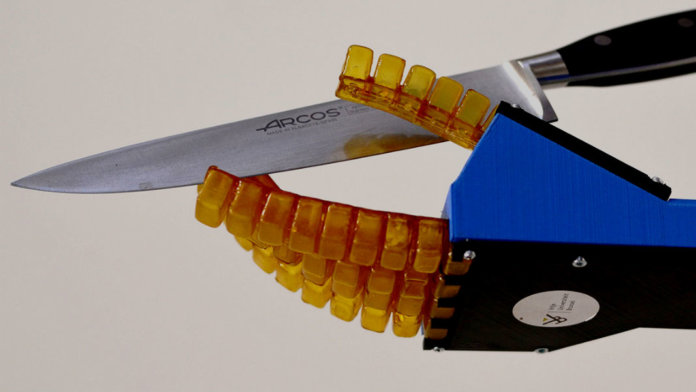We all have scars, and each one tells a story. Tales of tomfoolery, tales of haphazardness, or in my case, tales of stupidity.
Whether the cause of your scar was a push-bike accident, a lack of concentration while cutting onions, or simply the byproduct of an active lifestyle, the experience was likely extremely painful and distressing. Not to mention the long and vexatious recovery period, stretching out for weeks and months after the actual event!
Cast your minds back to that time. How you longed for instant relief from your discomfort! How you longed to have your capabilities restored in an instant!
Well, materials that can heal themselves in an instant may not be far from becoming a reality—and a family of them known as elastomers holds the key.
“Elastomer” is essentially a big, fancy word for rubber. However, elastomers have one unique property—they are capable of returning to their original form after being vigorously stretched and deformed.
This unique property of elastomers has caught the eye of many scientists around the world, particularly those working in the field of robotics. The reason? Elastomer can be encouraged to return to its original shape, in many cases by simply applying heat. The implication of this is the quick and cost-effective repair of “wounds”—cuts, tears, and punctures to the soft, elastomer-based appendages of a robot’s exoskeleton.
Researchers from Vrije University in Brussels, Belgium have been toying with the technique, and with remarkable success. The team built a robotic hand with fingers made of a type of elastomer. They found that cuts and punctures were indeed able to repair themselves simply by applying heat to the affected area.
How long does the healing process take? In this instance, about a day. Now that’s a lot shorter than the weeks and months of recovery time we typically need for a flesh wound, during which we are unable to write, play the guitar, or do the dishes. If you consider the latter to be a bad thing…
However, it’s not the first time scientists have played around with elastomers and examined their self-healing properties. Another team of scientists, headed up by Cheng-Hui Li and Chao Wang, discovered another type of elastomer that exhibited autonomous self-healing properties. Just to help you picture this stuff, the material closely resembles animal muscle— strong, flexible, and elastic. With autogenetic restorative powers to boot.
Advancements in the world of self-healing elastomers, or rubbers, may also affect the lives of everyday motorists. Researchers from the Harvard John A. Paulson School of Engineering and Applied Sciences (SEAS) have developed a self-healing rubber material that could be used to make tires that repair their own punctures.
This time the mechanism of self-healing doesn’t involve heat. Rather, it is related to a physical phenomenon associated with the rubber’s unique structure. Normally, when a large enough stress is applied to a typical rubber, there is catastrophic failure at the focal point of that stress. The self-healing rubber the researchers created, on the other hand, distributes that same stress evenly over a network of “crazes”—which are like cracks connected by strands of fiber.
Here’s the interesting part. Not only does this unique physical characteristic of the rubber prevent catastrophic failure, it facilitates self-repair. According to Harvard researchers, when the stress is released, the material snaps back to its original form and the crazes heal.
This wonder material could be used in any number of rubber-based products.
Professor Jinrong Wu, of Sichuan University, China, and co-author of the study, happened to single out tires: “Imagine that we could use this material as one of the components to make a rubber tire… If you have a cut through the tire, this tire wouldn’t have to be replaced right away. Instead, it would self-heal while driving, enough to give you leeway to avoid dramatic damage,” said Wu.
So where to from here? Well, self-healing elastomers could have a number of different applications. According to the article published by Quartz, cited earlier, the material could be used on artificial limbs. Perhaps it will provide some measure of structural integrity without looking like a tattered mess after years of regular use.
Or perhaps a sort of elastomer-based hybrid skin is on the horizon. A skin in which wounds heal instantly. And recovery time, unlike your regular old human skin of yesteryear, is significantly slashed. Furthermore, this future skin might eliminate those little reminders we call scars.
For those with poor judgment skills, this spells an end to disquieting reminders of our own stupidity.
Image Credit: Vrije Universiteit Brussel / Prof. Dr. ir. Bram Vanderborght



